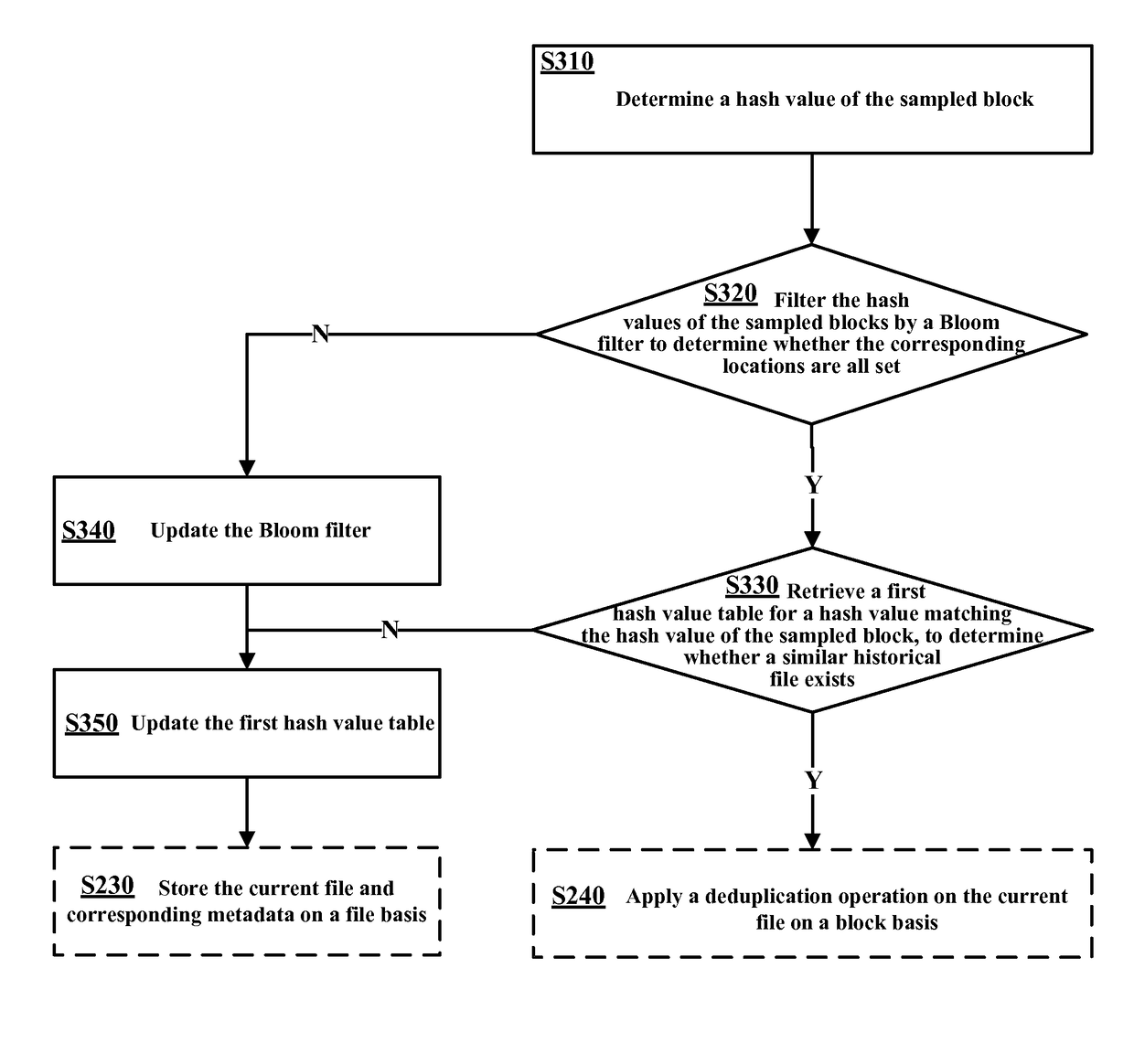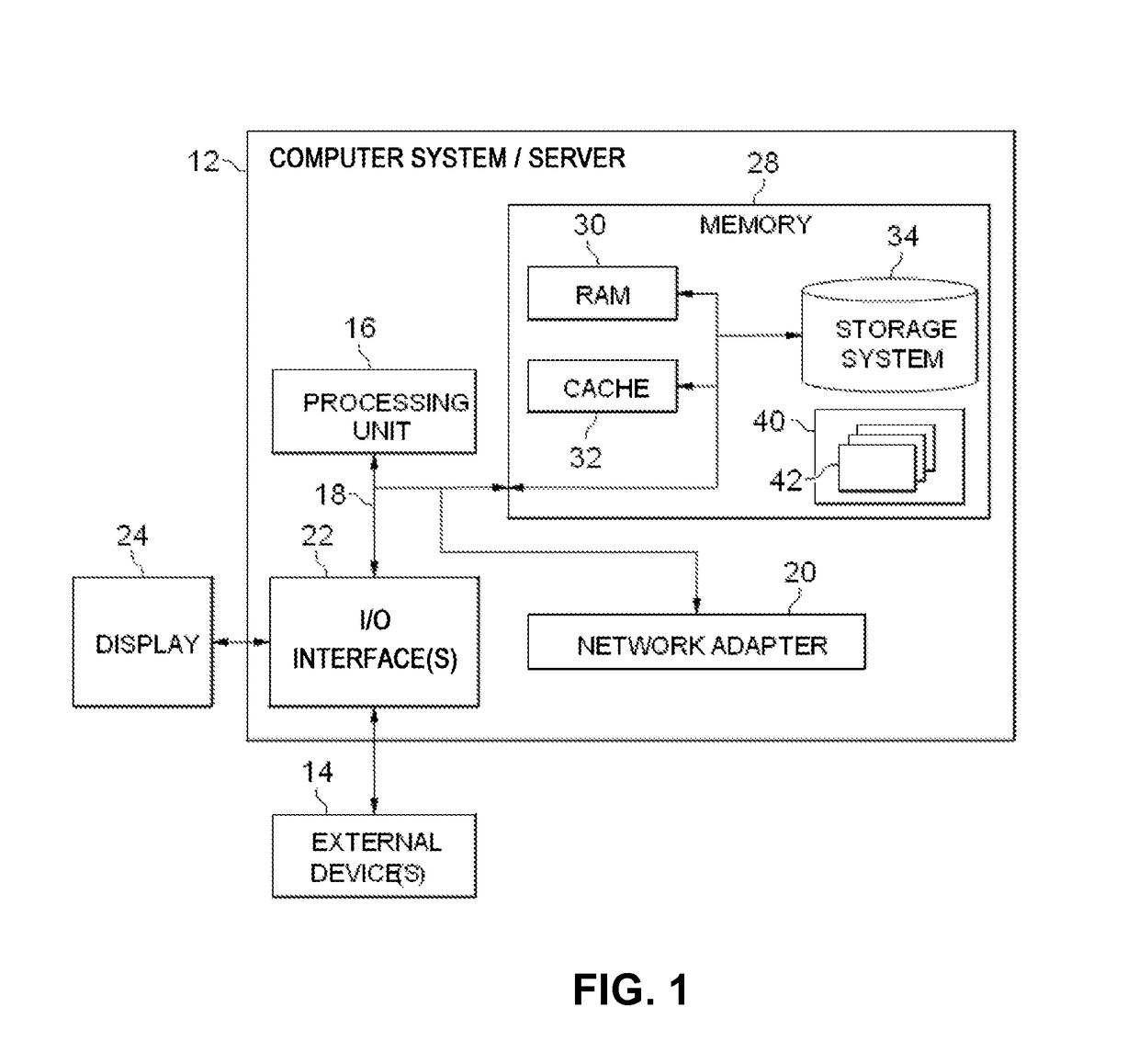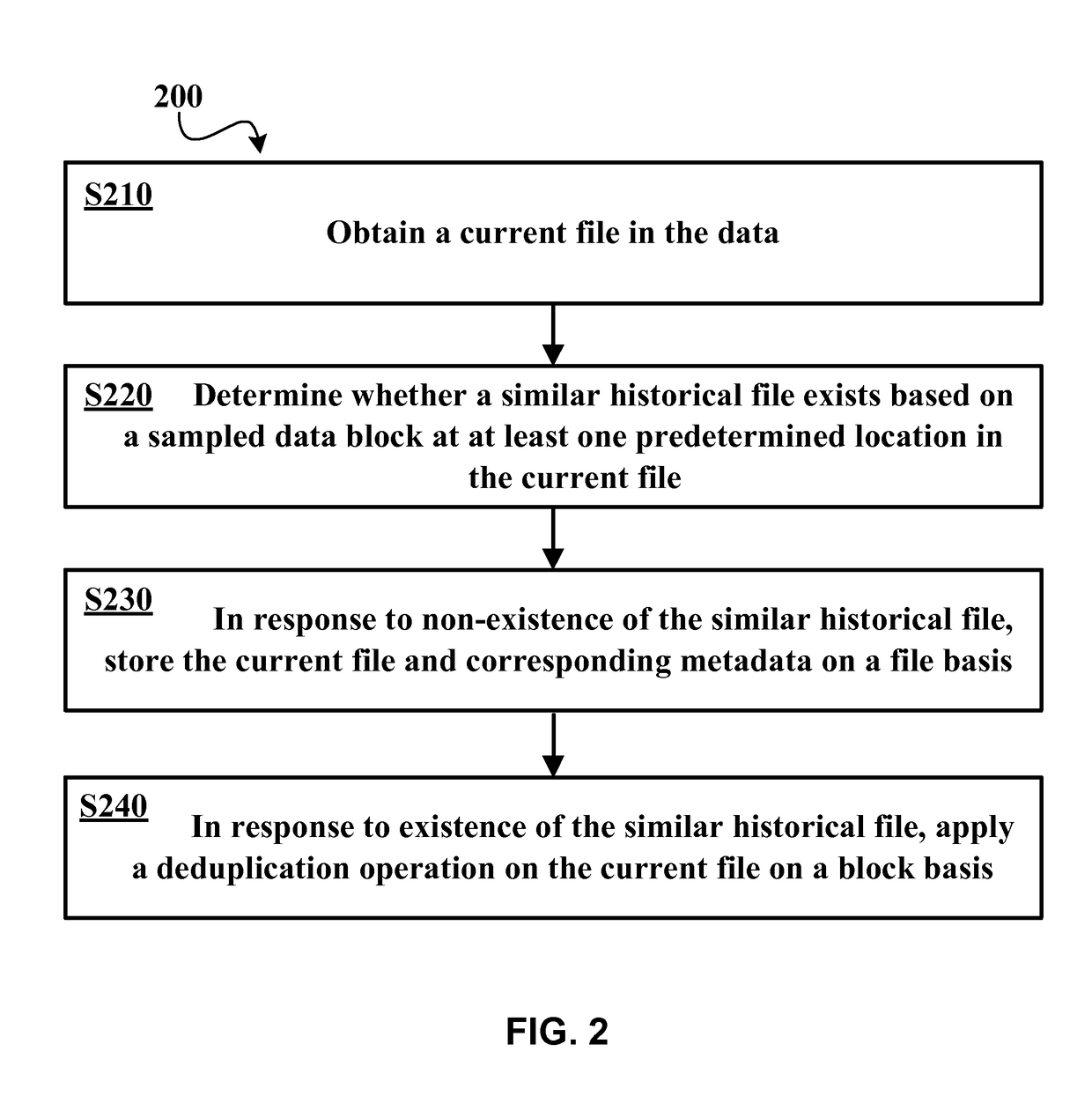Method and apparatus for data deduplication
- Summary
- Abstract
- Description
- Claims
- Application Information
AI Technical Summary
Benefits of technology
Problems solved by technology
Method used
Image
Examples
Embodiment Construction
[0013]A traditional data deduplication solution generally comprises three portions: block partitioning, hash calculation, and removal of redundant data. In the traditional deduplication technology, only a block partitioning-based deduplication solution is employed. For each file, regardless of whether similar historical files exist, it will be subject to block partitioning and then subject to the existing deduplication process, which is not only rather inefficient, but also consumes computational overheads. Meanwhile, a traditional block partitioning-based deduplication technology will generate mass metadata. Besides, the management and storage of these block-oriented metadata is also very complex, which will greatly restricts the scalability of the existing storage system.
[0014]In view of the above, the existing technology still has plenty of room to improve.
[0015]Some preferable embodiments will be described in more detail with reference to the accompanying drawings, in which the ...
PUM
 Login to View More
Login to View More Abstract
Description
Claims
Application Information
 Login to View More
Login to View More - R&D
- Intellectual Property
- Life Sciences
- Materials
- Tech Scout
- Unparalleled Data Quality
- Higher Quality Content
- 60% Fewer Hallucinations
Browse by: Latest US Patents, China's latest patents, Technical Efficacy Thesaurus, Application Domain, Technology Topic, Popular Technical Reports.
© 2025 PatSnap. All rights reserved.Legal|Privacy policy|Modern Slavery Act Transparency Statement|Sitemap|About US| Contact US: help@patsnap.com



